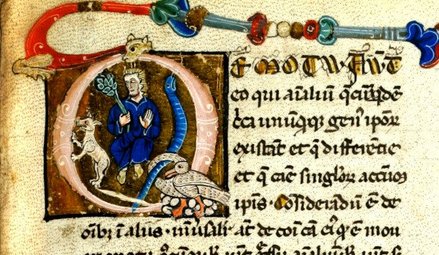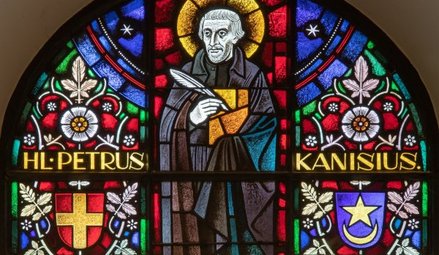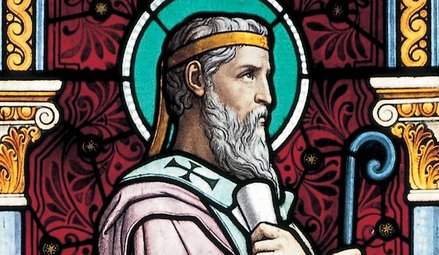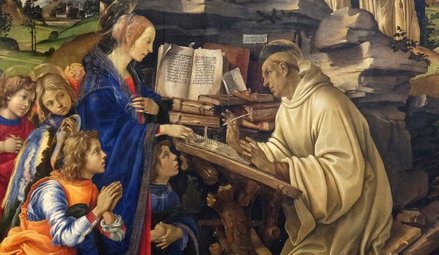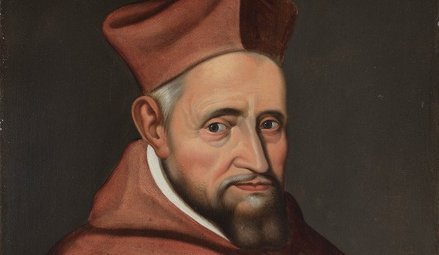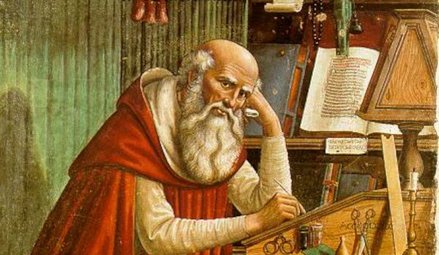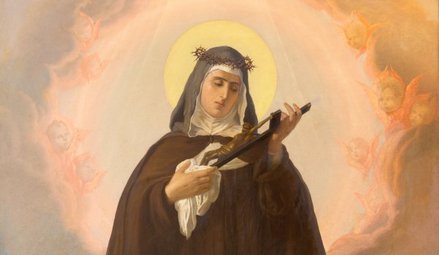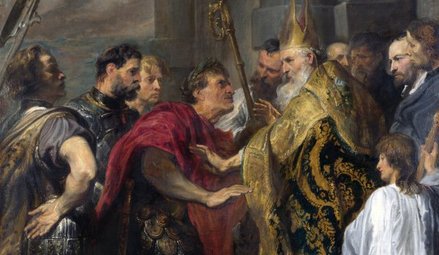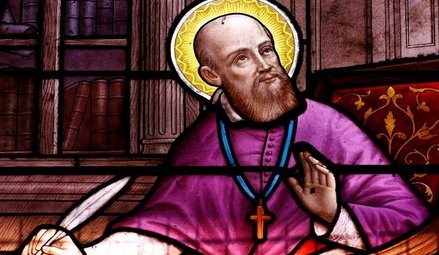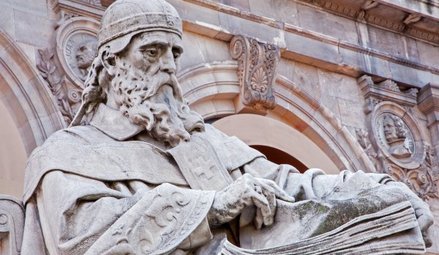- By theme
- Jesus
- The many proofs of Christ’s resurrection
- Saint Thomas Aquinas: God gave all the divine proofs we needed to believe
- The surpassing power of Christ's word
- Lewis’s trilemma: a proof of Jesus’s divinity
- God saves: the power of the holy name of Jesus
- Jesus spoke and acted as God's equal
- Jesus' divinity is actually implied in the Koran
- Jesus came at the perfect time of history
- Rabbinical sources testify to Jesus' miracles
- Mary
- The Church
- The Bible
- An enduring prophecy and a series of miraculous events preventing the reconstruction of the Temple
- The authors of the Gospels were either eyewitnesses or close contacts of those eyewitnesses
- Onomastics support the historical reliability of the Gospels
- The New Testament was not altered
- The New Testament is the best-attested manuscript of Antiquity
- The Gospels were written too early after the facts to be legends
- Archaeological finds confirm the reliability of the New Testament
- The criterion of embarrassment proves that the Gospels tell the truth
- The dissimilarity criterion strengthens the case for the historical reliability of the Gospels
- 84 details in Acts verified by historical and archaeological sources
- The unique prophecies that announced the Messiah
- The time of the coming of the Messiah was accurately prophesied
- The prophet Isaiah's ultra accurate description of the Messiah's sufferings
- Daniel's "Son of Man" is a portrait of Christ
- The Apostles
- Saint Peter, prince of the apostles
- Saint John the Apostle: an Evangelist and Theologian who deserves to be better known (d. 100)
- Saint Matthew, apostle, evangelist and martyr (d. 61)
- James the Just, “brother” of the Lord, apostle and martyr (d. 62 AD)
- Saint Matthias replaces Judas as an apostle (d. 63)
- The martyrs
- The protomartyr Saint Stephen (d. 31)
- Polycarp, bishop of Smyrna, disciple of John and martyr (d. 155)
- Saint Blandina and the Martyrs of Lyon: the fortitude of faith (177 AD)
- Saint Agatha stops a volcano from destroying the city of Catania (d. 251)
- Saint Lucy of Syracuse, virgin and martyr for Christ (d. 304)
- Thomas More: “The king’s good servant, but God’s first”
- The martyrdom of Paul Miki and his companions (d. 1597)
- The martyrs of Angers and Avrillé (1794)
- The Martyrs of Compiègne (1794)
- The Vietnamese martyrs Father Andrew Dung-Lac and his 116 companions (17th-19th centuries)
- He braved torture to atone for his apostasy (d. 1818)
- Blaise Marmoiton: the epic journey of a missionary to New Caledonia (d. 1847)
- José Luis Sanchez del Rio, martyred at age 14 for Christ the King (d. 1928)
- Saint Maximilian Kolbe, Knight of the Immaculate (d. 1941)
- The monks
- The Desert Fathers (3rd century)
- Saint Anthony of the Desert, a father of monasticism (d. 356)
- Saint Benedict, father of Western monasticism (d. 550)
- Saint Bruno the Carthusian (d.1101): the miracle of a hidden life
- Blessed Angelo Agostini Mazzinghi: the Carmelite with flowers pouring from his mouth (d. 1438)
- Monk Abel of Valaam's accurate prophecies about Russia (d. 1841)
- The more than 33,000 miracles of Saint Charbel Maklouf (d. 1898)
- Saint Pio of Pietrelcina (d. 1968): How God worked wonders through "a poor brother who prays"
- The surprising death of Father Emmanuel de Floris (d. 1992)
- The prophecies of Saint Paisios of Mount Athos (d. 1994)
- The saints
- Saints Anne and Joachim, parents of the Virgin Mary (19 BC)
- Saint Nazarius, apostle and martyr (d. 68 or 70)
- Ignatius of Antioch: successor of the apostles and witness to the Gospel (d. 117)
- Saint Gregory the Miracle-Worker (d. 270)
- Saint Martin of Tours: patron saint of France, father of monasticism in Gaul, and the first great leader of Western monasticism (d. 397)
- Saint Lupus, the bishop who saved his city from the Huns (d. 623)
- Saint Dominic of Guzman (d.1221): an athlete of the faith
- Saint Francis, the poor man of Assisi (d. 1226)
- Saint Anthony of Padua: "everyone’s saint"
- Saint Rose of Viterbo or How prayer can transform the world (d. 1252)
- Saint Simon Stock receives the scapular of Mount Carmel from the hands of the Virgin Mary
- The unusual boat of Saint Basil of Ryazan
- Saint Agnes of Montepulciano's complete God-confidence (d. 1317)
- The extraordinary conversion of Michelina of Pesaro
- Saint Peter Thomas (d. 1366): a steadfast trust in the Virgin Mary
- Saint Rita of Cascia: hoping against all hope
- Saint Catherine of Genoa and the Fire of God's love (d. 1510)
- Saint Anthony Mary Zaccaria, physician of bodies and souls (d. 1539)
- Saint Ignatius of Loyola (d. 1556): "For the greater glory of God"
- Brother Alphonsus Rodríguez, SJ: the "holy porter" (d. 1617)
- Martin de Porres returns to speed up his beatification (d. 1639)
- Virginia Centurione Bracelli: When God is the only goal, all difficulties are overcome (d.1651)
- Saint Marie of the Incarnation, "the Teresa of New France" (d.1672)
- St. Francis di Girolamo's gift of reading hearts and souls (d. 1716)
- Rosa Venerini: moving in the ocean of the Will of God (d. 1728)
- Seraphim of Sarov (1759-1833): the purpose of the Christian life is to acquire the Holy Spirit
- Camille de Soyécourt, filled with divine fortitude (d. 1849)
- Bernadette Soubirous, the shepherdess who saw the Virgin Mary (1858)
- Saint John Vianney (d. 1859): the global fame of a humble village priest
- Gabriel of Our Lady of Sorrows, the "Gardener of the Blessed Virgin" (d. 1862)
- Father Gerin, the holy priest of Grenoble (1863)
- Blessed Francisco Palau y Quer: a lover of the Church (d. 1872)
- Saints Louis and Zelie Martin, the parents of Saint Therese of Lisieux (d. 1894 and 1877)
- The supernatural maturity of Francisco Marto, “contemplative consoler of God” (d. 1919)
- Saint Faustina, apostle of the Divine Mercy (d. 1938)
- Brother Marcel Van (d.19659): a "star has risen in the East"
- Doctors
- The mystics
- Lutgardis of Tongeren and the devotion to the Sacred Heart
- Saint Angela of Foligno (d. 1309) and "Lady Poverty"
- Saint John of the Cross: mystic, reformer, poet, and universal psychologist (+1591)
- Blessed Anne of Jesus: a Carmelite nun with mystical gifts (d.1621)
- Catherine Daniélou: a mystical bride of Christ in Brittany
- Saint Margaret Mary sees the "Heart that so loved mankind"
- Mother Yvonne-Aimée of Jesus' predictions concerning the Second World War (1922)
- Sister Josefa Menendez, apostle of divine mercy (d. 1923)
- Edith Royer (d. 1924) and the Sacred Heart Basilica of Montmartre
- Rozalia Celak, a mystic with a very special mission (d. 1944)
- Visionaries
- Saint Perpetua delivers her brother from Purgatory (203)
- María de Jesús de Ágreda, abbess and friend of the King of Spain
- Discovery of the Virgin Mary's house in Ephesus (1891)
- Sister Benigna Consolata: the "Little Secretary of Merciful Love" (d. 1916)
- Maria Valtorta's visions match data from the Israel Meteorological Service (1943)
- Berthe Petit's prophecies about the two world wars (d. 1943)
- Maria Valtorta saw only one pyramid at Giza in her visions... and she was right! (1944)
- The 700 extraordinary visions of the Gospel received by Maria Valtorta (d. 1961)
- The amazing geological accuracy of Maria Valtorta's writings (d. 1961)
- Maria Valtorta's astronomic observations consistent with her dating system
- Discovery of an ancient princely house in Jerusalem, previously revealed to a mystic (d. 1961)
- The popes
- The great witnesses of the faith
- Saint Augustine's conversion: "Why not this very hour make an end to my uncleanness?" (386)
- Thomas Cajetan (d. 1534): a life in service of the truth
- Madame Acarie, "the servant of the servants of God" (d. 1618)
- Blaise Pascal (d.1662): Biblical prophecies are evidence
- Madame Élisabeth and the sweet smell of virtue (d. 1794)
- Jacinta, 10, offers her suffering to save souls from hell (d. 1920)
- Father Jean-Édouard Lamy: "another Curé of Ars" (d. 1931)
- Christian civilisation
- The depth of Christian spirituality
- John of the Cross' Path to perfect union with God based on his own experience
- The dogma of the Trinity: an increasingly better understood truth
- The incoherent arguments against Christianity
- The "New Pentecost": modern day, spectacular outpouring of the Holy Spirit
- The Christian faith explains the diversity of religions
- Cardinal Pierre de Bérulle (d.1629) on the mystery of the Incarnation
- Christ's interventions in history
- Marian apparitions and interventions
- The Life-giving Font of Constantinople
- Our Lady of Virtues saves the city of Rennes in Bretagne (1357)
- Mary stops the plague epidemic at Mount Berico (1426)
- Our Lady of Miracles heals a paralytic in Saronno (1460)
- Cotignac: the first apparitions of the Modern Era (1519)
- Savona: supernatural origin of the devotion to Our Lady of Mercy (1536)
- The Virgin Mary delivers besieged Christians in Cusco, Peru
- The victory of Lepanto and the feast of Our Lady of the Rosary (1571)
- The apparitions to Brother Fiacre (1637)
- The “aldermen's vow”, or the Marian devotion of the people of Lyon (1643)
- Our Lady of Nazareth in Plancoët, Brittany (1644)
- Our Lady of Laghet (1652)
- Saint Joseph’s apparitions in Cotignac, France (1660)
- Heaven confides in a shepherdess of Le Laus (1664-1718)
- Zeitoun, a two-year miracle (1968-1970)
- The Holy Name of Mary and the major victory of Vienna (1683)
- Heaven and earth meet in Colombia: the Las Lajas shrine (1754)
- The five Marian apparitions that traced an "M" over France, and its new pilgrimage route
- A series of Marian apparitions and prophetic messages in Ukraine since the 19th century (1806)
- "Consecrate your parish to the Immaculate Heart of Mary" (1836)
- At La Salette, Mary wept in front of the shepherds (1846)
- Our Lady of Champion, Wisconsin: the first and only approved apparition of Mary in the US (1859)
- Gietrzwald apparitions: heavenly help to a persecuted minority
- The silent apparition of Knock Mhuire in Ireland (1879)
- Mary "Abandoned Mother" appears in a working-class district of Lyon, France (1882)
- The thirty-three apparitions of the Virgin Mary in Beauraing (1932)
- "Our Lady of the Poor" appears eight times in Banneux (1933)
- Fontanelle-Montichiari apparitions of Our Lady "Rosa Mystica" (1947)
- Mary responds to the Vows of the Polish Nation (1956)
- Zeitoun apparitions
- The Virgin Mary comes to France's rescue by appearing at L'Ile Bouchard (1947)
- Maria Esperanza Bianchini and Mary, Mary, Reconciler of Peoples and Nations (1976)
- Luz Amparo and the El Escorial apparitions
- The extraordinary apparitions of Medjugorje and their worldwide impact
- The Virgin Mary prophesied the 1994 Rwandan genocide (1981)
- Our Lady of Soufanieh's apparition and messages to Myrna Nazzour (1982)
- The Virgin Mary heals a teenager, then appears to him dozens of times (1986)
- Seuca, Romania: apparitions and pleas of the Virgin Mary, "Queen of Light" (1995)
- Angels and their manifestations
- Mont Saint-Michel: Heaven watching over France
- Angels give a supernatural belt to the chaste Thomas Aquinas (1243)
- The constant presence of demons and angels in the life of St Frances of Rome (d. 1440)
- Mother Yvonne-Aimée escapes from prison with the help of an angel (1943)
- Saved by Angels: The Miracle on Highway 6 (2008)
- Exorcisms in the name of Christ
- A wave of charity unique in the world
- Saint Peter Nolasco: a life dedicated to ransoming enslaved Christians (d. 1245)
- Saint Angela Merici: Christ came to serve, not to be served (d. 1540)
- Saint John of God: a life dedicated to the care of the poor, sick and those with mental disorders (d. 1550)
- Saint Camillus de Lellis, reformer of hospital care (c. 1560)
- Blessed Alix Le Clerc, encouraged by the Virgin Mary to found schools (d. 1622)
- Saint Vincent de Paul (d. 1660), apostle of charity
- Marguerite Bourgeoys, Montreal's first teacher (d. 1700)
- Frédéric Ozanam, inventor of the Church's social doctrine (d. 1853)
- Damian of Molokai: a leper for Christ (d. 1889)
- Pier Giorgio Frassati (d.1925): heroic charity
- Saint Dulce of the Poor, the Good Angel of Bahia (d. 1992)
- Mother Teresa of Calcutta (d. 1997): an unshakeable faith
- Heidi Baker: Bringing God's love to the poor and forgotten of the world
- Amazing miracles
- The miracle of liquefaction of the blood of St. Januarius (d. 431)
- The miracles of Saint Anthony of Padua (d. 1231)
- Saint Pius V and the miracle of the Crucifix (1565)
- Saint Philip Neri calls a teenager back to life (1583)
- The resurrection of Jérôme Genin (1623)
- Saint Francis de Sales brings back to life a victim of drowning (1623)
- Saint John Bosco and the promise kept beyond the grave (1839)
- The day the sun danced at Fatima (1917)
- Pius XII and the miracle of the sun at the Vatican (1950)
- When Blessed Charles de Foucauld saved a young carpenter named Charle (2016)
- Reinhard Bonnke: 89 million conversions (d. 2019)
- Miraculous cures
- The royal touch: the divine thaumaturgic gift granted to French and English monarchs (11th-19th centuries)
- With 7,500 cases of unexplained cures, Lourdes is unique in the world (1858-today)
- Our Lady at Pellevoisin: "I am all merciful" (1876)
- Mariam, the "little thing of Jesus": a saint from East to West (d.1878)
- Gemma Galgani: healed to atone for sinners' faults (d. 1903)
- The miraculous cure of Blessed Maria Giuseppina Catanea
- The extraordinary healing of Alice Benlian in the Church of the Holy Cross in Damascus (1983)
- The approved miracle for the canonization of Juan Diego Cuauhtlatoatzin (1990)
- Healed by St Charbel Makhlouf, her scars bleed each month for the benefit of unbelievers (1993)
- The miracle that led to Brother André's canonisation (1999)
- Bruce Van Natta's intestinal regrowth: an irrefutable miracle (2007)
- He had “zero” chance of living: a baby's miraculous recovery (2015)
- Manouchak, operated on by Saint Charbel (2016)
- How Maya was cured from cancer at Saint Charbel's tomb (2018)
- Preserved bodies of the saints
- Dying in the odour of sanctity
- The body of Saint Cecilia found incorrupt (d. 230)
- Stanislaus Kostka's burning love for God (d. 1568)
- Blessed Antonio Franco, bishop and defender of the poor (d. 1626)
- The incorrupt body of Marie-Louise Nerbollier, the visionary from Diémoz (d. 1910)
- The great exhumation of Saint Charbel (1950)
- Bilocations
- Inedias
- Levitations
- Lacrimations and miraculous images
- Saint Juan Diego's tilma (1531)
- The Rue du Bac apparitions of the Virgin Mary to St. Catherine Labouré (Paris, 1830)
- Mary weeps in Syracuse (1953)
- Teresa Musco (d.1976): salvation through the Cross
- Soufanieh: A flow of oil from an image of the Virgin Mary, and oozing of oil from the face and hands of Myrna Nazzour (1982)
- The Saidnaya icon exudes a wonderful fragrance (1988)
- Our Lady weeps in a bishop's hands (1995)
- Stigmates
- The venerable Lukarda of Oberweimar shares her spiritual riches with her convent (d. 1309)
- Blessed Maria Grazia Tarallo, mystic and stigmatist (d. 1912)
- Saint Padre Pio: crucified by Love (1918)
- Elena Aiello: "a Eucharistic soul"
- A Holy Triduum with a Syrian mystic, witnessing the sufferings of Christ (1987)
- A Holy Thursday in Soufanieh (2004)
- Eucharistic miracles
- Lanciano: the first and possibly the greatest Eucharistic miracle (750)
- A host came to her: 11-year-old Imelda received Communion and died in ecstasy (1333)
- Faverney's hosts miraculously saved from fire
- A tsunami recedes before the Blessed Sacrament (1906)
- Buenos Aires miraculous host sent to forensic lab, found to be heart muscle (1996)
- Relics
- The Veil of Veronica, known as the Manoppello Image
- For centuries, the Shroud of Turin was the only negative image in the world
- The Holy Tunic of Argenteuil's fascinating history
- Saint Louis (d. 1270) and the relics of the Passion
- The miraculous rescue of the Shroud of Turin (1997)
- A comparative study of the blood present in Christ's relics
- Jews discover the Messiah
- Francis Xavier Samson Libermann, Jewish convert to Catholicism (1824)
- Our Lady of the Miraculous Medal and the conversion of Alphonse Ratisbonne (1842)
- Max Jacob: a liberal gay Jewish artist converts to Catholicism (1909)
- Edith Stein - Saint Benedicta of the Cross: "A daughter of Israel who, during the Nazi persecutions, remained united with faith and love to the Crucified Lord, Jesus Christ, as a Catholic, and to her people as a Jew"
- Patrick Elcabache: a Jew discovers the Messiah after his mother is miraculously cured in the name of Jesus
- Cardinal Aron Jean-Marie Lustiger (d. 2007): Chosen by God
- Muslim conversions
- Buddhist conversions
- Atheist conversions
- The conversion of an executioner during the Terror (1830)
- God woos a poet's heart: the story of Paul Claudel's conversion (1886)
- Dazzled by God: Madeleine Delbrêl's story (1924)
- C.S. Lewis, the reluctant convert (1931)
- The day André Frossard met Christ in Paris (1935)
- MC Solaar's rapper converts after experiencing Jesus' pains on the cross
- Father Sébastien Brière, converted at Medjugorje (2003)
- Franca Sozzani, the "Pope of fashion" who wanted to meet the Pope (2016)
- Nelly Gillant: from Reiki Master to Disciple of Christ (2018)
- Testimonies of encounters with Christ
- Near-death experiences (NDEs) confirm Catholic doctrine on the Four Last Things
- The NDE of Saint Christina the Astonishing, a source of conversion to Christ (1170)
- Jesus audibly calls Alphonsus Liguori to follow him (1723)
- Blessed Dina Bélanger (d. 1929): loving God and letting Jesus and Mary do their job
- Gabrielle Bossis: He and I
- André Levet's conversion in prison
- Journey between heaven and hell: a "near-death experience" (1971)
- Alicja Lenczewska: conversations with Jesus (1985)
- Vassula Ryden and the "True Life in God" (1985)
- Nahed Mahmoud Metwalli: from persecutor to persecuted (1987)
- The Bible verse that converted a young Algerian named Elie (2000)
- Invited to the celestial court: the story of Chantal (2017)
- Providential stories
- The superhuman intuition of Saint Pachomius the Great
- Germanus of Auxerre's prophecy about Saint Genevieve's future mission, and protection of the young woman (446)
- Seven golden stars reveal the future location of the Grande Chartreuse Monastery (1132)
- The supernatural reconciliation of the Duke of Aquitaine (1134)
- Saint Zita and the miracle of the cloak (13th c.)
- Joan of Arc: "the most beautiful story in the world"
- John of Capistrano saves the Church and Europe (1456)
- A celestial music comforts Elisabetta Picenardi on her deathbed (d. 1468)
- Gury of Kazan: freed from his prison by a "great light" (1520)
- The strange adventure of Yves Nicolazic (1623)
- Julien Maunoir miraculously learns Breton (1626)
- Pierre de Keriolet: with Mary, one cannot be lost (1636)
- How Korea evangelized itself (18th century)
- A hundred years before it happened, Saint Andrew Bobola predicted that Poland would be back on the map (1819)
- The prophetic poem about John Paul II (1840)
- Don Bosco's angel dog: Grigio (1854)
- Thérèse of Lisieux saved countless soldiers during the Great War
- Lost for over a century, a Russian icon reappears (1930)
- In 1947, a rosary crusade liberated Austria from the Soviets (1946-1955)
- The discovery of the tomb of Saint Peter in Rome (1949)
- He should have died of hypothermia in Soviet jails (1972)
- God protects a secret agent (1975)
- Flowing lava stops at church doors (1977)
- A protective hand saved John Paul II and led to happy consequences (1981)
- Mary Undoer of Knots: Pope Francis' gift to the world (1986)
- Edmond Fricoteaux's providential discovery of the statue of Our Lady of France (1988)
- The Virgin Mary frees a Vietnamese bishop from prison (1988)
- The miracles of Saint Juliana of Nicomedia (1994)
- Global launch of "Pilgrim Virgins" was made possible by God's Providence (1996)
- The providential finding of the Mary of Nazareth International Center's future site (2000)
- Syrian Monastery shielded from danger multiple times (2011-2020)
- Jesus
- Who are we?
- Make a donation
TOUTES LES RAISONS DE CROIRE
Les docteurs
n°80
Italy
1696-1787
Saint Alphonsus Liguori: a lawyer takes on supernatural work
Born into a Neapolitan noble family, Alphonsus was a successful lawyer for 8 years, until he audibly heard a divine call in 1722 to consecrate his life to God only. He became a priest and devoted himself in particular to serving the lazzaroni, i.e the homeless and the marginalized youth of Naples. Under the patronage of Saint Francis de Sales, he founded the Congregation of the Most Holy Redeemer (Redemptorists), whose preaching was marked by apostolic simplicity and the education of the poor. Elected bishop of Sant'Agata dei Goti (in Benevento, Campania), he devoted himself in an extraordinary way to this ministry, but had to resign fifteen years later for serious health reasons. He died on August 1, 1787.
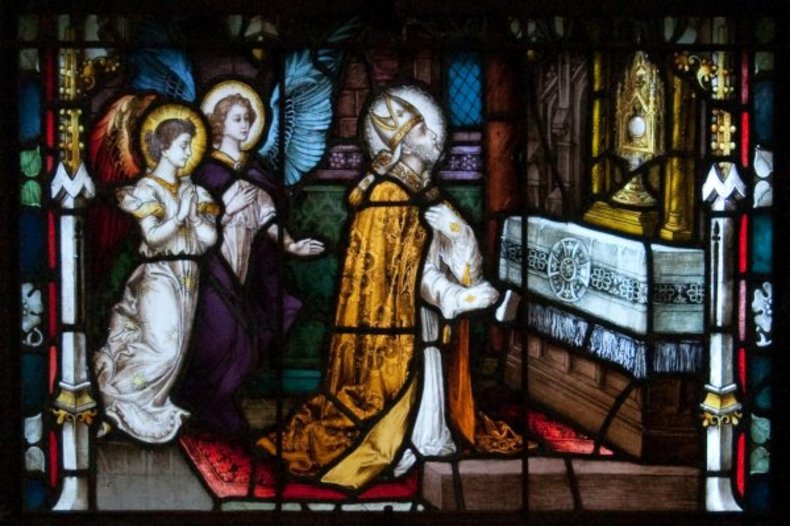
Saint Alphonsus kneeling before the Blessed Sacrament, stained glass window by Franz Mayer in Carlow Cathedral /© CC BY-SA 4.0/Andreas F. Borchert
Les raisons d'y croire :
- Liguori's religious vocation happened quickly, in a complete and definitive way: following a spiritual retreat, and in the space of a few days, he decided to become a priest. The strength of his personal call to serve God is undeniable.
- Despite his noble origins and brilliant career, he chose to devote himself body and soul to the most destitute, the incurably ill and those condemned to death.
A Muslim in Alphonsus' service, called Abdallah, suddenly expressed his desire to become a Christian. As no one had pushed him to convert, he was asked how he came to this decision. He replied: "It was the example of my master that prompted me. This religion that makes my master live with such honesty, piety and humanity towards me cannot be false."
- Miracles marked a large part of Alphonsus' life: luminous phenomena (on August 28, 1723, at the hospice of the Incurables in Naples), celestial messages, visions, bilocations, ecstasies, healings, Eucharistic prodigies, etc. Liguori's take on his extraordinary mystical experiences (Praxis confessari, chap. 9) is in perfect accord with the Church's longstanding teaching.
- The theological and spiritual work of Alphonsus Liguori is absolutely incredible. A prolific writer, and one of the most widely read Catholic authors, he wrote no less than 111 works, some of which have been published in over 20,000 editions. One of his books alone, Moral Theology, earned him the title of "Prince of Moral Theologians". Pope Pius XII named him the patron of confessors and moral theologians in 1950.
- He founded the Redemptorists, encouraged by a mystic nun, Blessed Maria Celeste Crostarosa, who had a vision about the founding of this new order, including the type and color of the habit its members would adopt. Today, this religious order has more than 5,300 brothers and 4,000 priests throughout the world.
- Saint Alphonsus is one of the 37 Doctors of the Church, a rare distinction establishing exceptional authority (eminens doctrina) in the theological field.
Synthèse :
Alphonsus was the eldest son of a family of noble lineage but impoverished, from the Kingdom of Naples, then owned by the Spanish crown. His father, Giuseppe Liguori, an overly authoritarian man, was a naval officer and Captain of the Royal Galleys. His mother, Anna Caterina, on the other hand, was a gentle and pious woman. It was she who gave her children a solid and consistent Christian education, and inspired Alphonsus' deep devotion to the Virgin Mary. One of her brothers (Alphonsus' uncle) was bishop of Troia, and two of her sisters (the future saint's aunts) were Franciscan nuns. Alphonsus was baptised two days after his birth, on September 29, 1696.
The young Alphonsus was a very bright student: his two tutors, both priests, taught him Latin, Greek, Italian, Spanish, French, history, mathematics and physics, all subjects in which he showed great aptitude. It was easy to see that he would have an important career in Neapolitan society. His second tutor, don Rocco, added lessons in architecture, painting, fencing and philosophy. This was an important stage for the boy, who became fascinated by the cultural heritage of Antiquity, and wondered about the encounter between Christian revelation and Greek thought.
At the age of nine, Alphonsus made his First Communion and joined the congregation of the young nobles of Saint Joseph, a kind of charity run by the local nobility. Being confronted with poverty and illness for the first time in his life left a deep impression on him.
Alphonsus was encouraged by his father to study law. Despite his young age (twelve), he was allowed to enroll at the University of Naples. His philosophy professor was the exceptional Giambattista Vico, with whom he maintained a friendly relationship for several years. He graduated with doctorates in civil and canon law at 16, in 1713. He even wrote his first text, a moral code for lawyers. In the evenings, when he had finished his research, he mingled with other students in the streets of Naples. The light, student atmosphere suited him, even if deep down he felt the transitory nature of the secular world.
By age nineteen he was practicing law. His oral arguments were highly sought. At that time, his spiritual life was still minimal, mainly attending mass and receiving the sacraments, but nothing more. On the other hand, his concern for the poor was growing. He joined the Confraternity of Our Lady of the Visitation. He was a member for the next eight years. It was a seminal experience: he visited the needy in the Neapolitan hospital of St Mary of the People.
The following year, he joined the Confraternity of Mercy, helping and comforting imprisoned religious and the poor of Naples, to ensure that they were given a decent burial. One day, Alphonsus' father returned from a sea voyage with a Muslim slave, whom he put to work for him. Alphonsus got to know the slave and enjoyed a good relationship with him. But, horrified by the way some men treated their fellow human beings, he declared that this slave deserved to be freed.
During Holy Week in 1722, Alphonsus took part in a spiritual retreat on the theme of hell. It was a huge shock. He became aware of something new to him: God loves mankind to the point of abasing himself to reach them, but the latter, by their dissolute or indifferent lives, are distancing themselves from him. He felt a deep call to convert and to offer his life for God, and center it on charity, not occasionally but permanently. He wondered, "What was my life before this moment?" His religious practice changed completely: he began the recitation of the Liturgy of the Hours, long and recurrent adoration of the Blessed Sacrament, daily recitation of the Rosary, etc.
During his adolescence, Alphonsus had envisioned becoming a priest, but this aspiration was prevented by his father's will and the circumstances of his life. This time, he was certain, the Lord was calling him to the priesthood and to the service of the poor. In addition to this conversion, Providence offered Alphonsus an ideal opportunity to turn towards the priesthood: he lost an important case, the first he had lost in eight years of practising law. He then decided to leave the profession. Then, on August 28, 1723, while helping the sick at the Incurables hospice in Naples, he was suddenly surrounded by a supernatural light and heard a voice say to him: "Abandon the world and give yourself to me." How could he not respond to this call from God?
Relations with his father were tense. Alphonsus suffered persecution from his family. His father opposed his plans to enter the Oratory of St. Philip Neri and insisted that he not give up his career as a lawyer, and threatened to disown him. Through to the intervention of the Cardinal Archbishop of Naples, Francesco Pignatelli, Alphonsus finally agreed to become a priest but to live at home as a member of a group of secular missionaries.
He was therefore admitted as a candidate for the priesthood. The conditions of his studies were precarious. At the time, Naples did not yet have a proper seminary, so he had to train in the pastoral field by helping a parish priest and, in the evenings, read theologians, moralists and other liturgists. With persistence, perseverance and grace, he was ordained a priest on December 21, 1726. He was then 31 years old. He spent six years giving missions throughout Naples. The first years of his priesthood he had to live at his parents' home, because his father wanted to maintain some control on his reputation, as his radical conversion were the talks of Neapolitan high society. He gave Alphonsus a monthly allowance and a servant. But the young priest wanted his freedom, and above all to serve God in a much more generous way. He therefore renounced his father's inheritance.
For a while, Alphonsus lived with Father Ripa, a priest and former missionary in China. Father Ripa soon introduced him to another priest, Don Thomas Falcoia, in his sixties, who had had a mystical vision years before of nuns and religious brothers wearing a new habit, all destined to imitate the virtues of Jesus Christ. Father Falcoia had founded of the Congregation of Pious Workers. Now, in 1724, Sister Maria Celeste Crostarosa , who had joined this small community, had in turn had several visions: the Church would approve a new female order similar to that of Father Falcoia. Her confessor then asked her to write down her experience and communicate her notes to the convent's director, Father Falcoia himself!
For various reasons, Falcoia was unable to found his order quickly. In the summer of 1730, Providence acted again in an unexpected way: Alphonsus went to Father Falcoia's community to rest. His reputation for holiness began to grow in the Naples area; when the priests and the Bishop of Scala heard that he was successfully preaching to the shepherds he had met on his way to the convent, they immediately asked him to speak to the nuns in the community where he was to spend a few days resting. There he met a mystic nun called Sister Maria Celeste. Her visions confirmed Alphonsus in his plan to found a religious order to serve the needy: this was to be the congregation of the Redemptorists, whose red and blue habit, were even part of the vision.
On October 3, 1731, Sr. M. Celeste saw Christ and St Francis of Assisi; a priest was standing beside them. She recognized him: it was Alphonsus. She heard: "I chose him to lead my institute." A year later, the Congregation of the Most Holy Redeemer was born. The structure was divided into two branches: one for men and one for women. Alphonsus was obviously at the head of the congregation, but in practice, it was the bishop of Castellammare, the region where the small establishment was located, who oversaw convent life until 1743. Difficulties arose immediately. Tensions arose between its members, and it was not until 1749 that Pope Benedict XIV gave his approval for the men's congregation.
For years after that, Alphonsus' activity level was extraordinary. He gave many missions in rural areas. In 1762, he was elected Bishop of Sant'Agata dei Goti. His workload increased tenfold. When he arrived, the diocese was in need of everything: there was no seminary, no congregation, no Catholic school... He managed to bring it back to life in just a few years, through hard work and sacrifice. He fed the poor, instructed families, reorganized the seminary and religious houses, taught theology, and wrote. Some days, dozens of parents, aware of his gift for healing, brought their sick children to him. Some were healed by a prayer and a simple sign of the cross.
Since 1732, the Order had come close to disappearing several times, due to internal divisions and external pressure. Alphonsus never gave up or even gave in to the temptation to despair, knowing that hope, in all situations, including the most difficult, comes from God. He spent the last seven years of his life in a kind of disgrace, not for spiritual reasons, but on account of a painful sickness and persecution from his fellow priests, who dismissed him from the Congregation that he had founded. Suffering the anguish of exclusion, he also endured deafness, blindness, and paralysis after an attack of rheumatic fever. He received the last rites eight times!
From 1784 onwards, Alphonsus experienced a "night of the soul", a phenomenon well known to many saints and mystics (such as Saint Therese of Lisieux). He died in the peace of Christ on August 1, 1787. The adventure of the Redemptorists had barely begun.
Alphonsus was proclaimed blessed in 1816 by Pope Pius VII, canonized in 1839 by Gregory XVI, and proclaimed a Doctor of the Church Pius IX in In 1871.
Patrick Sbalchiero
Au-delà des raisons d'y croire :
Saint Alphonsus Liguori is one of the greatest moral theologians of the 18th century - which is also the century of the Enlightenment. His extensive works on moral, theological, and ascetic matters had great impact and have survived through the years, especially his materpiece, Moral Theology, born of his pastoral experience, and his Glories of Mary.
Aller plus loin :
Saint Alphonsus Liguori: Doctor of the Church by Fr. D. F. Miller, C.SS.R, Fr. L. X. Aubin, C.SS.R, TAN Books, 1940












